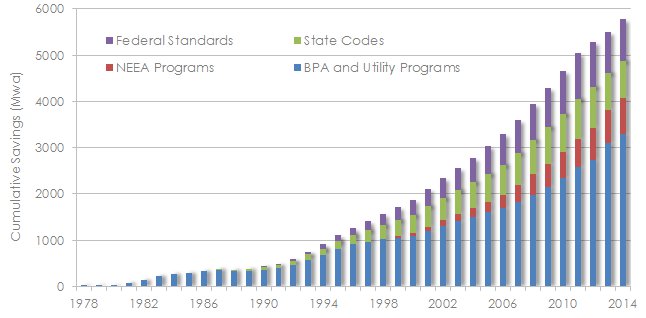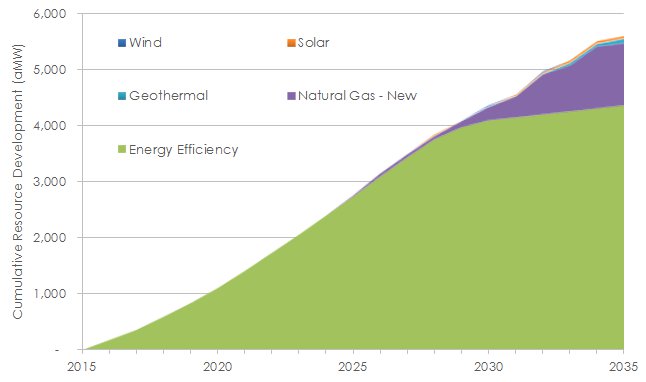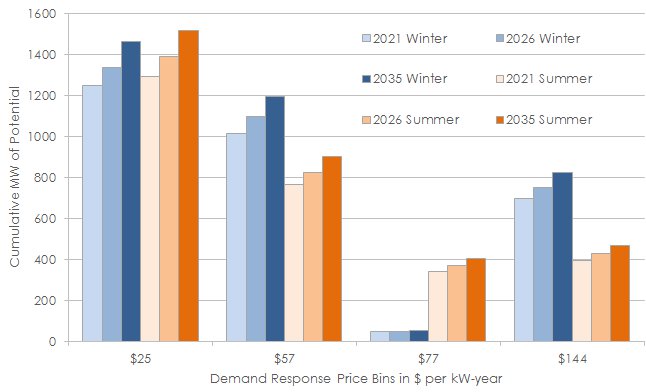Northwest Power Plan Supports Growth While Preserving Natural Resources
Improved energy efficiency, demand response, and natural gas generation are primary means to ensuring a reliable and economical power supply
- February 02, 2016
- Carol Winkel

Council members approved its Seventh Power Plan at its February meeting, concluding a 60-day comment period.
The plan, developed to ensure that the Northwest will have a reliable and economical power supply, calls for energy efficiency and demand response resources, along with existing natural gas-fired generation, to meet our future energy needs.
The Council heard from a broad cross section of stakeholders, from utilities and energy organizations to environmental and fishery groups, in strong support of the plan, which also drew praise in a number of editorials.
The region's population is forecast to grow from 14 to 16 million people by 2035 and industrial output from $125 billion to $170 billion. But by building energy efficiency, the region's electricity loads are expected to stay at the current level of 20,000 average megawatts, continuing a 20-year trend of low load growth. Since 1995, annual energy loads grew at an average rate of only 0.40 percent, thanks to the region's investment in efficiency.
Since 1978, the region has saved enough energy to supply five cities the size of Seattle, and the latest plan builds on that success. Today, energy efficiency is the region's second largest resource, saving consumer's about $3.75 billion per year on electricity, and lowering annual carbon dioxide emissions by 22.2 million tons. By 2035, the cumulative amount of energy efficiency will be 10,000 average megawatts, or equivalent to 72 percent of the power generated by the regional hydrosystem (Bonneville Power Administration and other hydrosystems in the region), and 128 percent of just BPA's hydrosystem.
The combination of the region's legacy hydropower and ongoing energy efficiency investments have helped to make the Northwest's power system the cleanest in the nation.
"By investing in energy efficiency, at the levels recommended in the plan, we'll be able to grow our economy without significantly increasing electricity costs and without sacrificing our quality of life," said Council Chair Henry Lorenzen.
The plan includes a program to protect and enhance fish and wildlife affected by hydroelectric dams, and the plan's resource strategy, especially the energy efficiency measures, have allowed system operators over time to embed reliable fish and wildlife operations into core system operations while maintaining a power supply that is adequate, reliable, and affordable.
Energy Efficiency Savings Over Time

Acquiring energy efficiency is the primary action for the next six years:
7th Power Plan Resource Portfolio

Demand response — voluntary reductions in customer electricity use when the system is stressed — is used to meet winter and summer peaks. The plan identifies more than 4,300 megawatts of potential, more than 1,500 megawatts under $25 per kilowatt. It's a relatively low cost way to make sure the region has adequate resources to meet peak demand in the event of a low water year, combined with extreme weather.
Demand Response Price Bins

The plan also addressed the question of what it would take to lower carbon emissions from the power system. The assessment found that by maximizing existing technology, we could reduce emissions from about 54 million metric tons per year to about 16 million metric tons per year, or nearly 70 percent. Doing so would cost and additional $16 billion, nearly 20 percent above the cost of the least-cost resource strategies that comply, at the regional level, with federal emissions limits. To lower emissions even further would require significantly larger investments and technological advances.
Related: 18-minute audio transcript from the February 10, 2016 adoption of the Plan
Press Release: Northwest on Path to Lead Nation in Maximizing Energy Efficiency As Priority Energy Resource



